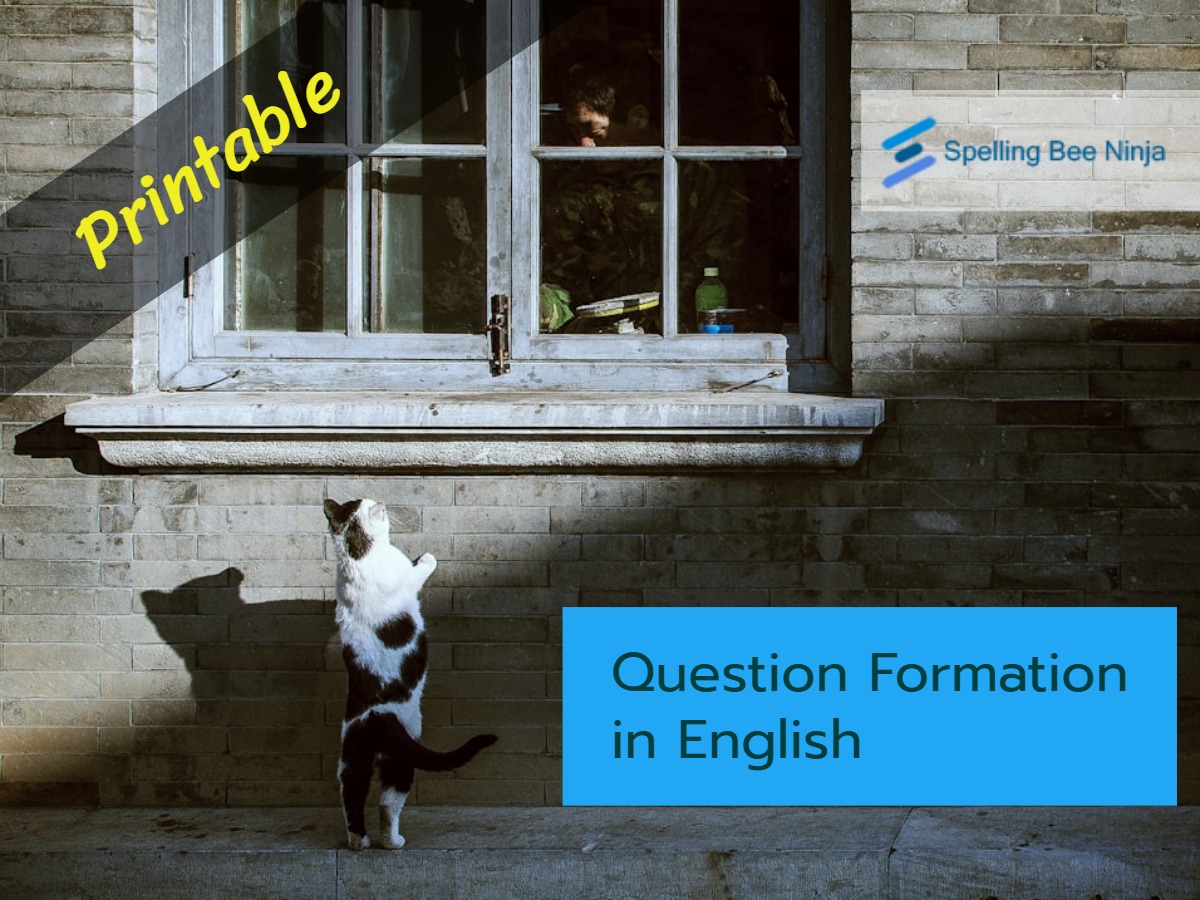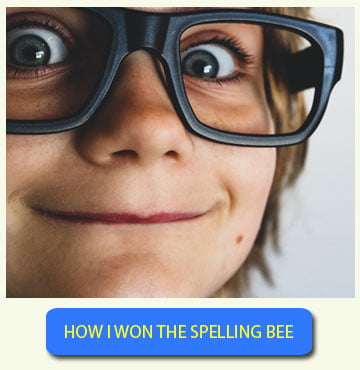Asking questions is an essential part of everyday communication. Whether you are trying to get information, clarify something, or just keep a conversation going, knowing how to form questions correctly is very important. In English, there are different types of questions: Yes/No questions, WH-questions, Tag questions and Rhetorical questions. This article will explain each type, how to form them, and when to use them—using simple examples and tips for ESL learners.
1. Yes/No Questions
What Are Yes/No Questions?
Yes/No questions are questions that can be answered with a simple “yes” or “no.” These types of questions usually begin with an auxiliary (helping) verb or modal verb.
How to Form Yes/No Questions
The basic structure is:
Auxiliary/Modal Verb + Subject + Main Verb + (Rest of Sentence)?
Examples:
- Do you like coffee?
- Is she coming to the party?
- Can he drive a car?
- Have they finished their homework?
- Did you go to the market?
Tenses and Verbs in Yes/No Questions
| Tense | Example Question |
|---|---|
| Present Simple | Do you work here? |
| Past Simple | Did she call you? |
| Present Continuous | Are they studying? |
| Past Continuous | Were you sleeping? |
| Present Perfect | Have you eaten yet? |
| Future (will) | Will it rain tomorrow? |
| Modal (can, should) | Can I help you? |
Tips:
- Use “do” or “does” in the present simple.
- Use “did” in the past simple.
- If the question includes a “be” verb (am, is, are, was, were), it comes at the beginning.
2. WH-Questions
What Are WH-Questions?
WH-questions are questions that begin with question words such as:
Who, What, Where, When, Why, Which, Whose, How
(“How” doesn’t start with “Wh” but is included in this group.)
These questions cannot be answered with “yes” or “no.” They require more information.
Common WH-Words and Their Uses
| WH-Word | Use | Example |
|---|---|---|
| Who | Person | Who is your teacher? |
| What | Thing or information | What do you want to eat? |
| Where | Place | Where do you live? |
| When | Time | When is the party? |
| Why | Reason | Why are you late? |
| Which | Choice | Which color do you like? |
| Whose | Possession | Whose book is this? |
| How | Manner, process, condition, etc. | How do you go to work? |
Structure of WH-Questions
WH-word + Auxiliary/Modal Verb + Subject + Main Verb + (Rest of Sentence)?
Examples:
- What are you doing?
- Where did she go?
- Why is he crying?
- How can I help you?
- Who called you last night?
If the WH-word is the subject:
Sometimes, the WH-word is also the subject of the question. In that case, the structure is simpler.
Examples:
- Who broke the window? (No auxiliary needed)
- What happened yesterday?
3. Tag Questions
What Are Tag Questions?
Tag questions are short questions added to the end of a sentence. They are used to:
- Confirm information
- Start a conversation
- Encourage a response
A tag question usually has an auxiliary verb and a pronoun. If the sentence is positive, the tag is negative. If the sentence is negative, the tag is positive.
Structure:
Statement + Tag?
Examples:
| Statement | Tag Question |
|---|---|
| She is a doctor, isn’t she? | (positive → negative tag) |
| They don’t like pizza, do they? | (negative → positive tag) |
| You can drive, can’t you? | |
| He went to school, didn’t he? |
Rules to Remember:
- Use the correct auxiliary verb from the main sentence.
- Use the correct pronoun (he, she, they, etc.) in the tag.
- Match the verb tense.
Examples:
- It’s hot today, isn’t it?
- You didn’t see the movie, did you?
- We have met before, haven’t we?
Special Case: “I am”
The tag for “I am” is usually “aren’t I?”
- I’m your friend, aren’t I?
Rhetorical questions
A rhetorical question is a figure of speech in which a question is posed not to elicit an actual response, but to make a point, emphasize an idea, or provoke thought in the listener or reader. Unlike genuine questions, rhetorical questions do not expect an answer, as the response is often obvious or implied by the context. They are widely used in everyday conversation, persuasive writing, speeches, and literature to engage the audience, highlight key messages, or express emotions such as surprise, criticism, or irony. For example, asking “Is the sky blue?” or “Who wouldn’t want to be a millionaire?” serves to underscore a statement rather than seek information15. Rhetorical questions can take various forms, including those that challenge, guide thinking, or stir emotions, and are effective in drawing the audience into the argument or narrative.
About Rhetoric
Rhetoric is the art of persuasive speaking and writing, a skill highly valued in ancient societies and still essential today. One of the most famous figures in the history of rhetoric is Marcus Tullius Cicero, a Roman statesman, lawyer, and orator who lived in the 1st century BCE. Cicero’s speeches and writings set a high standard for eloquence and effective persuasion, blending logical argument, emotional appeal, and ethical credibility. He believed that rhetoric was not just about winning arguments but about serving justice and the public good. Cicero’s works influenced not only Roman politics but also the development of rhetorical theory in Western education for centuries.
Common Mistakes to Avoid
❌ Incorrect Auxiliary
- Wrong: She like pizza, does she?
- Right: She likes pizza, doesn’t she?
❌ Using WH-Questions Like Yes/No
- Wrong: Do you where live?
- Right: Where do you live?
❌ Wrong Tag Pronoun
- Wrong: Maria is your sister, isn’t it?
- Right: Maria is your sister, isn’t she?
Practice Exercises
Try forming questions for the following statements:
- He goes to school every day.
→ Does he go to school every day? - They are playing soccer.
→ Are they playing soccer? - I met him yesterday.
→ When did you meet him? - She is a teacher.
→ She is a teacher, isn’t she? - You don’t eat meat.
→ Why don’t you eat meat?
Sure! Below is an exercise with an essay where students must identify different types of interrogative sentences (Yes/No Questions, WH-Questions, and Tag Questions). A table with the correct answers is provided at the end.
📝 Exercise: Identify the Interrogatives
Instructions:
Read the essay below. Underline or highlight all the questions. Then, identify the type of each question, the table beneath shows the correct answers for each sentence, you can choose among:
- Y/N = Yes/No Question
- WH = WH-Question
- TAG = Tag Question
Essay: A Day at the Market
Yesterday, I went to the local market with my cousin. It was a sunny day, and we wanted to buy fresh vegetables and fruits. When we arrived, I asked her, “Do you have the shopping list?” She smiled and said, “Of course!”
The market was busy. There were many people walking around, and some were bargaining with the sellers. One woman looked at us and asked, “Where did you buy those strawberries?” We pointed toward the fruit stall near the entrance.
While buying oranges, I heard a man ask his friend, “Can you carry this bag for me?” His friend nodded. Then, he added, “It’s heavy, isn’t it?“
We continued shopping and saw a group of children near a candy stand. One of them asked, “How much does this chocolate cost?” Another child said, “This looks delicious, doesn’t it?“
Before leaving, my cousin turned to me and asked, “Should we get some bread too?” I said yes, and we walked to the bakery section. The baker said, “You like sourdough bread, right?“
On the way home, we laughed about how crowded the market was. I asked her, “Why do so many people shop here on weekdays?” She just shrugged and replied, “Because everything is fresh and affordable.”
Essay Answers
| Question | Type |
|---|---|
| Do you have the shopping list? | Y/N |
| Where did you buy those strawberries? | WH |
| Can you carry this bag for me? | Y/N |
| It’s heavy, isn’t it? | TAG |
| How much does this chocolate cost? | WH |
| This looks delicious, doesn’t it? | TAG |
| Should we get some bread too? | Y/N |
| You like sourdough bread, right? | TAG |
| Why do so many people shop here on weekdays? | WH |
Tips for ESL Learners
- Listen to native speakers and pay attention to how they ask questions.
- Practice aloud with a partner or use apps to improve pronunciation.
- Use mirror practice: Ask yourself questions and answer them.
- Write your own examples every day to build fluency.
Conclusion
Forming questions in English is not difficult once you learn the basic rules and structures. Yes/No questions help you confirm facts, WH-questions help you get more details, and tag questions help keep conversations natural and friendly. Practice every day, and soon you’ll be asking all the right questions with confidence.
- ✈️ How to Use Articles in English
- 🐝 Mastering Adjectives: A Key to Enhancing Your Writing Skills
- 🎮 Pronoun Puzzle: A Fun Way to Practice Personal and Possessive Forms
- 🎮 Adjective Adventure: Descriptive Word Search!
- ✈️ How to use prepositions in English
- ✈️ English Adverbs – 5 Quick and Easy ways to learn.
- The definitive pronouns list
- 🐝 Understanding conjunction words and where to use them
- ✈️ Modal Verbs in English: A Comprehensive Guide
- 🐝 Prepositions list – The definitive guide
- ✈️ Active and Passive Voice
- ✈️ What vs Which: differences and examples
- 🐝 Complete transition words list
- ✈️ How to Use Punctuation in English
- ✈️ Exploring the Difference Between “Will” and “Shall” in English
- ✈️ The Difference Between Could, Should, and Ought in English
- ✈️ Common Idiomatic Expressions in English
- ✈️ 40 English Prefixes and their meanings
- ✈️ 30 Most common English suffixes and their meaning.
- 🐝 Linking Words In English And How To Learn Them Effectively
- ✈️ Comparative and Superlative Adjectives
- ✈️ The Six Noun Types (Common, Proper, Countable, Uncountable, Collective, Abstract)
- ✈️ Understanding English Clauses: A Complete Guide
- ✈️ Understanding Sentence Structure in English
- ✈️ Gerunds and Infinitives: Understanding Verb Complements in English
- ✈️ Common Pronunciation Mistakes and How to Fix Them
- ✈️ Question Formation in English
- ✈️ Common Sentence Errors: Fragments, Run-ons, and Misplaced Modifiers
- ✈️ Say What?! A Fun Guide to Direct and Indirect Speech
- ✈️ Commonly Confused Words
- 🐝 ELA vocabulary: Essential English Language Arts Terms Every Student Should Know
- ✈️ Formal vs. Informal Language
- ✈️ Mastering Phrases in English Grammar
- ✈️ Conditionals (Zero, First, Second, Third, Mixed Conditionals)
- ✈️ Emphasis and Inversion in Sentences
- ✈️ Understanding and Using the Imperative Form


